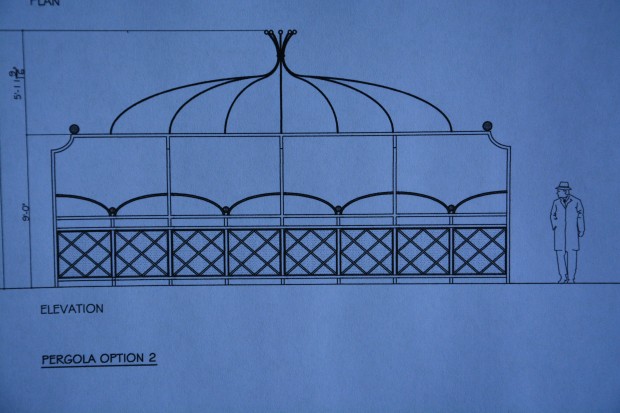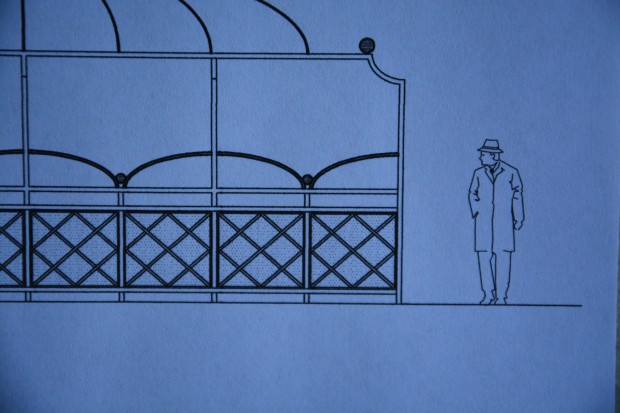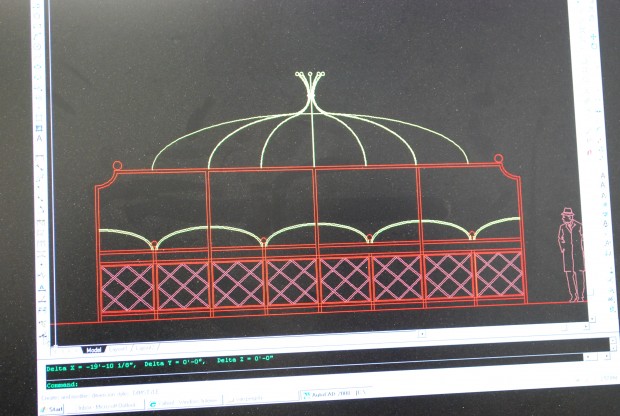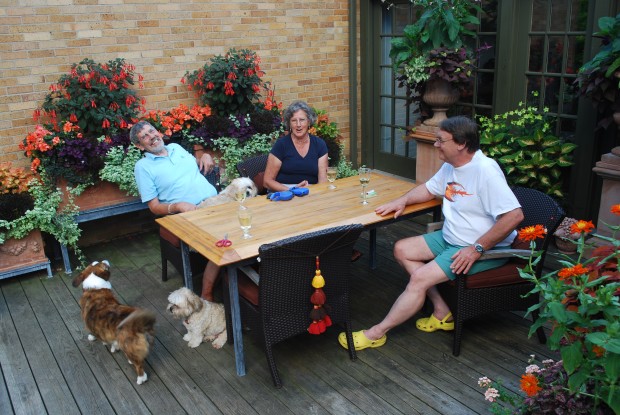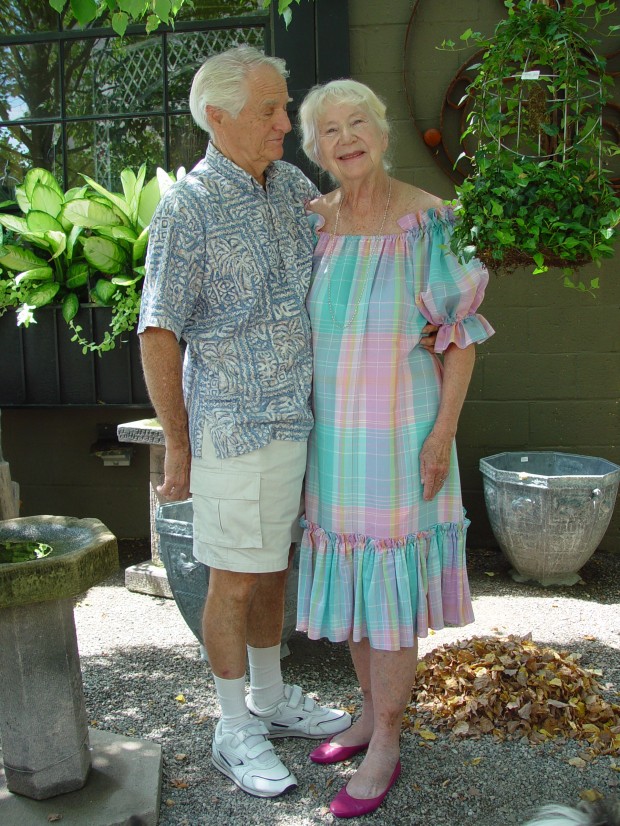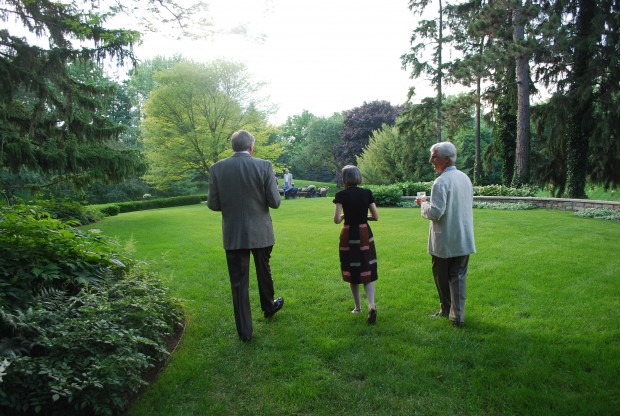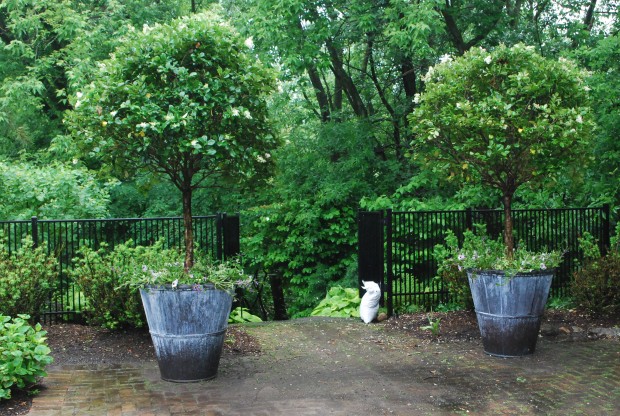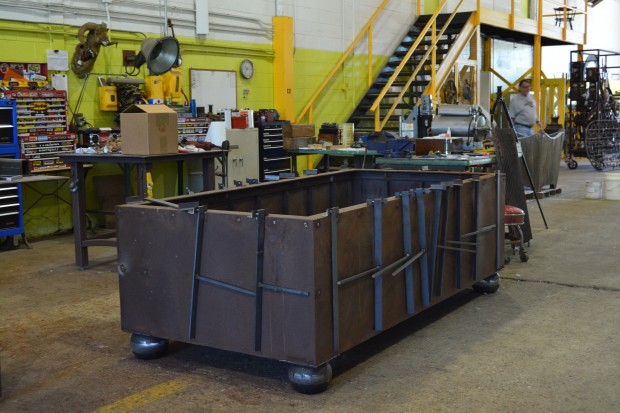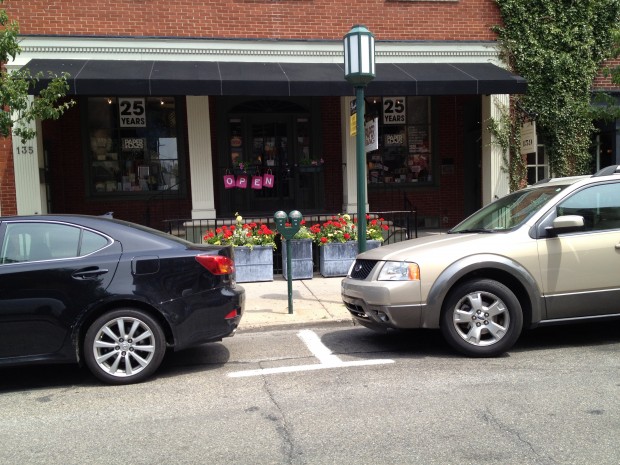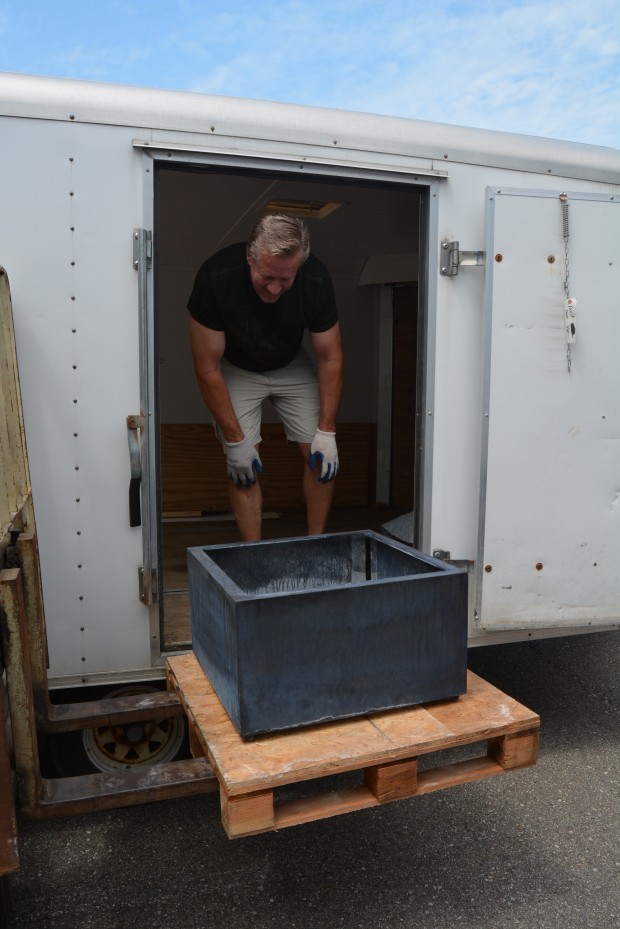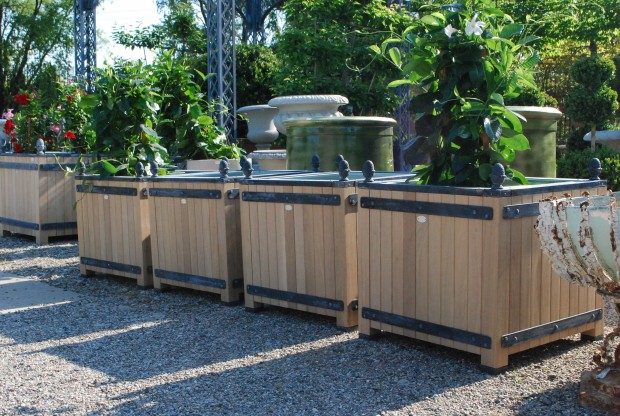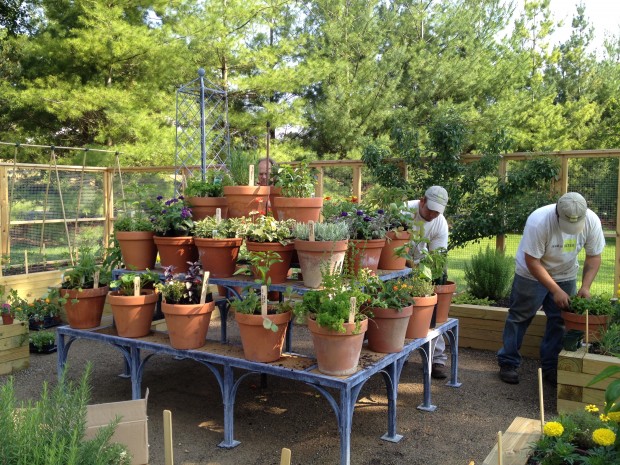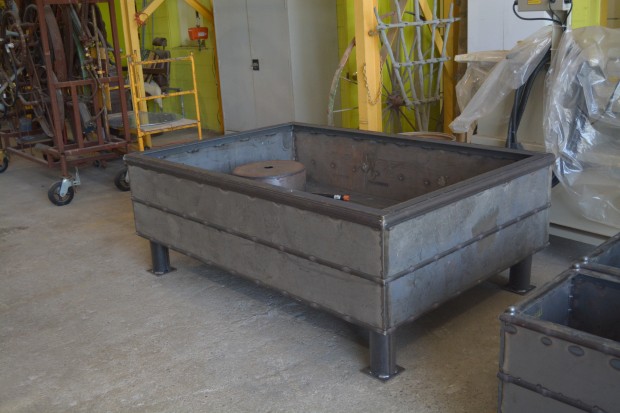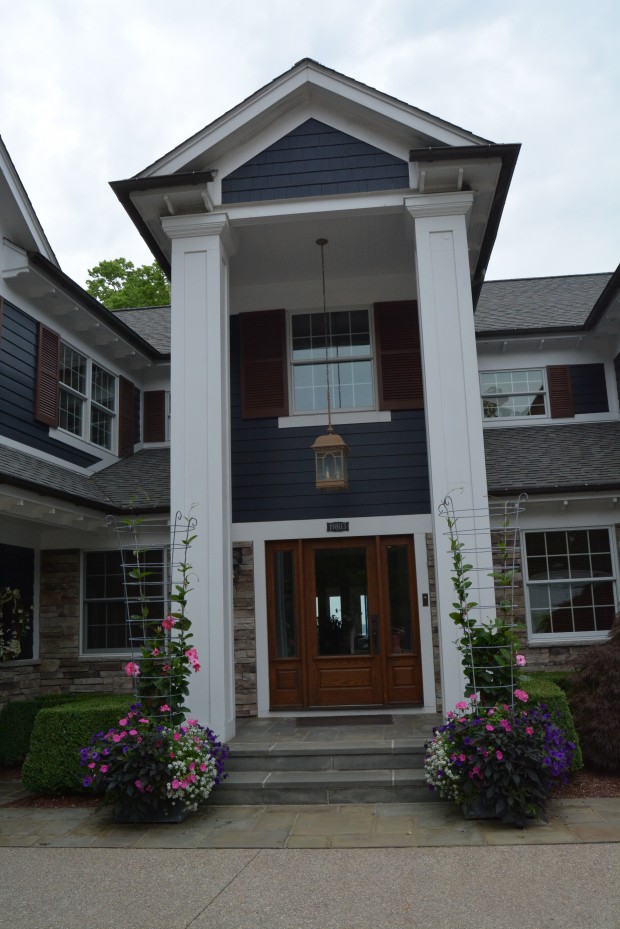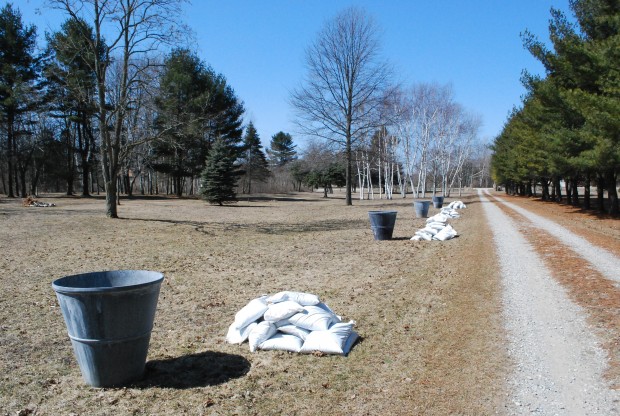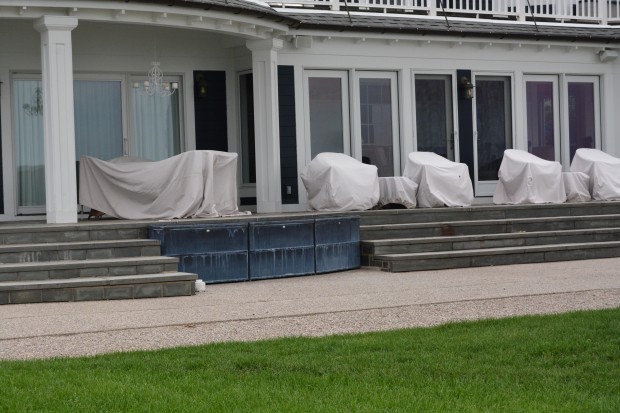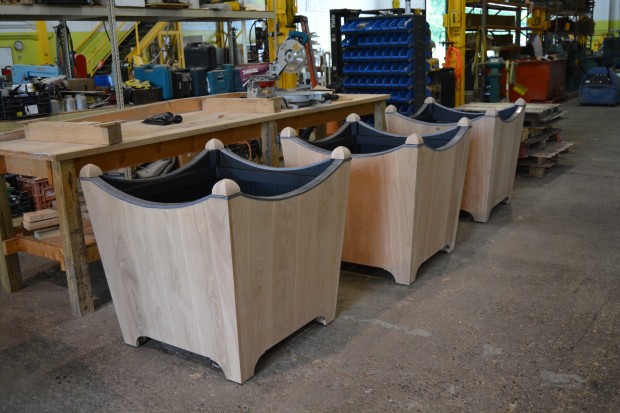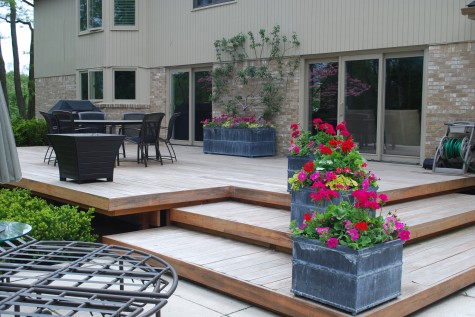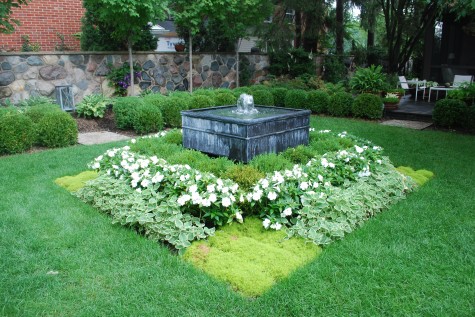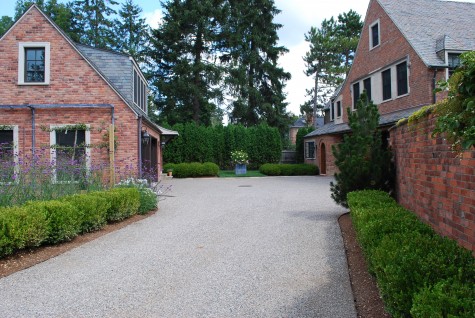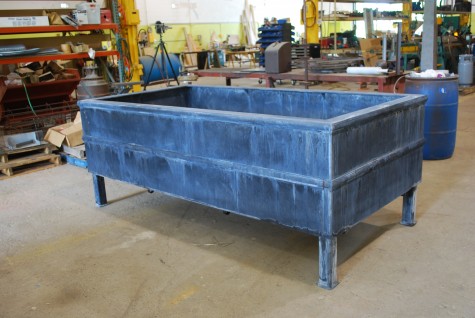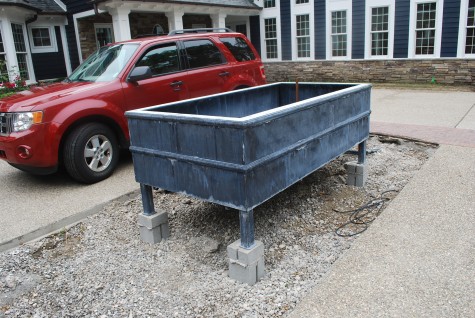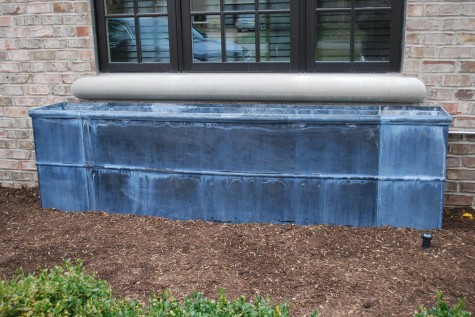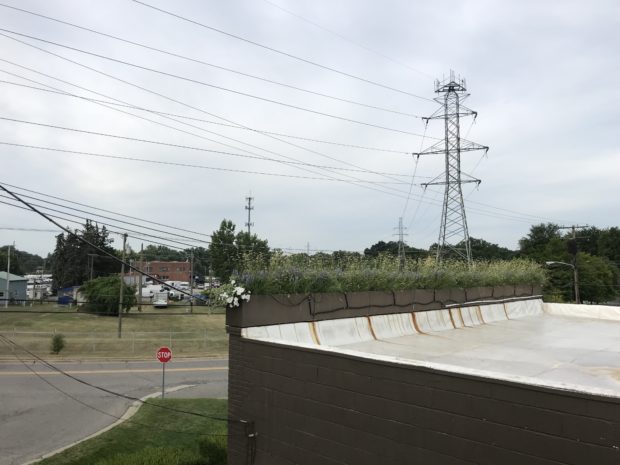 Those of you who make a practice of visiting Detroit Garden Works are aware that we have planter boxes on the roof. Eight rectangular heavy gauge sheet metal boxes span the entire width of the front of the shop. Designing and maintaining the planting for those boxes is a challenge. The weather conditions up there are extreme. It is always hot, windy, and completely exposed to whatever nature has a mind to dish out. Furthermore, whatever gets planted in them has to make some sort of impression from the ground. How are impressions made from afar? Light or pastel colors always read better at a distance. Large leaves are helpful. But the biggest impression to be made in this instance comes from the mass. This is 40 linear feet of boxes. The mass possible in these boxes is always in my favor, if I take advantage of it.
Those of you who make a practice of visiting Detroit Garden Works are aware that we have planter boxes on the roof. Eight rectangular heavy gauge sheet metal boxes span the entire width of the front of the shop. Designing and maintaining the planting for those boxes is a challenge. The weather conditions up there are extreme. It is always hot, windy, and completely exposed to whatever nature has a mind to dish out. Furthermore, whatever gets planted in them has to make some sort of impression from the ground. How are impressions made from afar? Light or pastel colors always read better at a distance. Large leaves are helpful. But the biggest impression to be made in this instance comes from the mass. This is 40 linear feet of boxes. The mass possible in these boxes is always in my favor, if I take advantage of it.
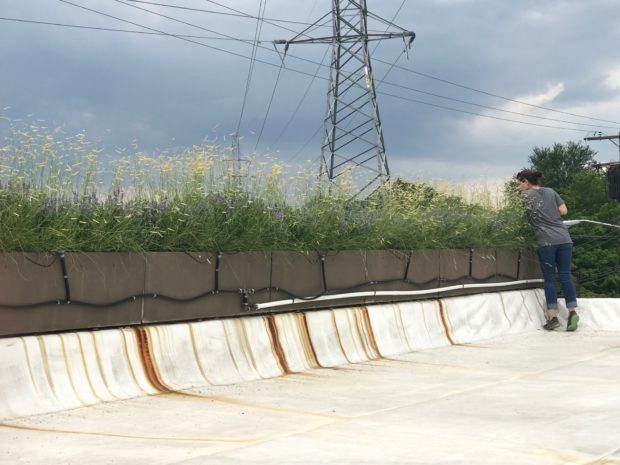 The design is not the only issue. Growing and maintaining plants on the roof has its own set of issues. It isn’t very practical to drag a hose upstairs, so we do have automatic irrigation in the boxes. You would think that would eliminate all of the water worries, but it doesn’t. The need for water changes all the time. Its very difficult to determine the moisture in the soil from the ground, although I personally can spot wilted plants from a long ways away. We have to get up on the roof to groom the pots, and feed them, so it is easy to check the water in person. Chelsea was up there to dead head the green and white plectranthus, and she noticed that the soil was bone dry in a number of places. It was easy to figure out that some of the micro mist heads had become clogged. Once they were cleaned, the water was flowing again.
The design is not the only issue. Growing and maintaining plants on the roof has its own set of issues. It isn’t very practical to drag a hose upstairs, so we do have automatic irrigation in the boxes. You would think that would eliminate all of the water worries, but it doesn’t. The need for water changes all the time. Its very difficult to determine the moisture in the soil from the ground, although I personally can spot wilted plants from a long ways away. We have to get up on the roof to groom the pots, and feed them, so it is easy to check the water in person. Chelsea was up there to dead head the green and white plectranthus, and she noticed that the soil was bone dry in a number of places. It was easy to figure out that some of the micro mist heads had become clogged. Once they were cleaned, the water was flowing again.
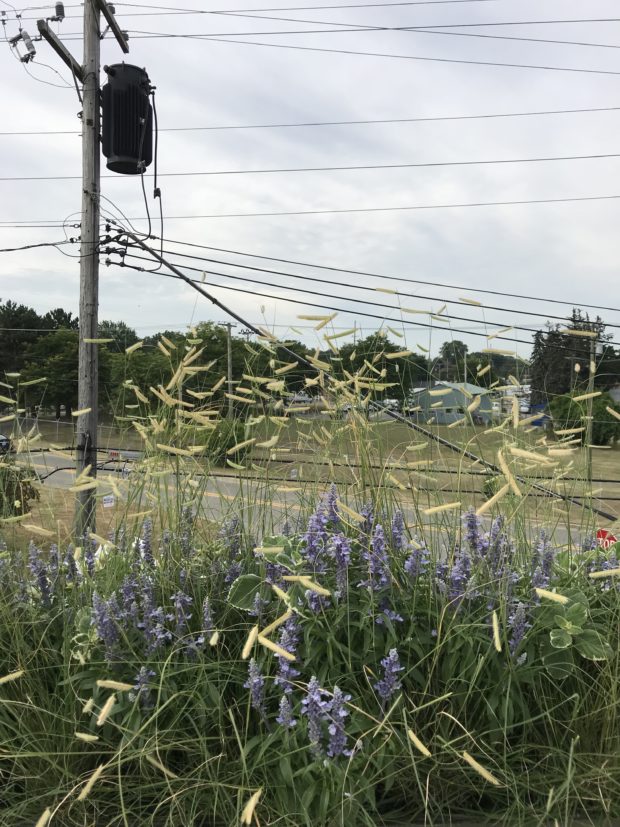 The box is planted with two rows. The back row is planted with bouteloua gracilis “Blonde Ambition”. Commonly known as blue grama grass, or mosquito grass, this hybrid of the species has chartreuse flower heads which gives way to blond seed heads. Those seed heads that resemble mosquito larvae hang from only one side of the flowering stalk. This makes for a horizontal seed head that is as beautiful as it is unexpected. Hardy in zone 3, it is happy in dry to moderate moisture conditions. The seed heads hold through the fall, and in to early winter. For the full rundown, see the entry from the Missouri Botanic Garden website: grama grass “Blonde Ambition” Between each grass is the annual blue salvia cultivar, Cathedral Sky Blue. Salvias are not especially showy, but the color of this cultivar is captivating. Mealy cup sage, or salvia farinacea, is notorious for sporting lots of foliage, and less in the way of flowers. The grama grass is a perfect companion. It all but obscures the foliage of the salvia. The airy seed heads hover over the the more dense and static salvia flower spikes. I was not expecting the combination to be so appealing.
The box is planted with two rows. The back row is planted with bouteloua gracilis “Blonde Ambition”. Commonly known as blue grama grass, or mosquito grass, this hybrid of the species has chartreuse flower heads which gives way to blond seed heads. Those seed heads that resemble mosquito larvae hang from only one side of the flowering stalk. This makes for a horizontal seed head that is as beautiful as it is unexpected. Hardy in zone 3, it is happy in dry to moderate moisture conditions. The seed heads hold through the fall, and in to early winter. For the full rundown, see the entry from the Missouri Botanic Garden website: grama grass “Blonde Ambition” Between each grass is the annual blue salvia cultivar, Cathedral Sky Blue. Salvias are not especially showy, but the color of this cultivar is captivating. Mealy cup sage, or salvia farinacea, is notorious for sporting lots of foliage, and less in the way of flowers. The grama grass is a perfect companion. It all but obscures the foliage of the salvia. The airy seed heads hover over the the more dense and static salvia flower spikes. I was not expecting the combination to be so appealing.
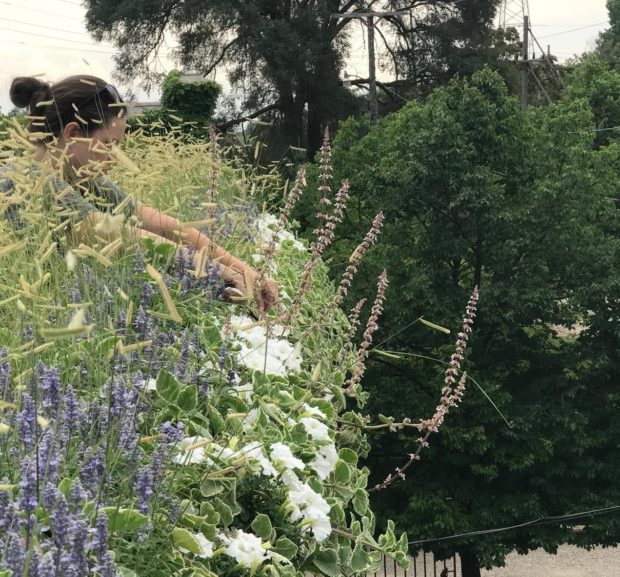 The row closest to the street has green and white plectranthus, and white petunias, alternating. The plectranthus has thick juicy leaves, so this plant is fairly well suited for drier conditions. Petunias, once established like the heat, and moderate water. The plectranthus is already cascading over the edge of the boxes, and hopefully the petunias will grow and ride the wave of plectranthus. We usually have our first hard frost late in October, which means we have almost 3 months more time to go with this planting.
The row closest to the street has green and white plectranthus, and white petunias, alternating. The plectranthus has thick juicy leaves, so this plant is fairly well suited for drier conditions. Petunias, once established like the heat, and moderate water. The plectranthus is already cascading over the edge of the boxes, and hopefully the petunias will grow and ride the wave of plectranthus. We usually have our first hard frost late in October, which means we have almost 3 months more time to go with this planting.
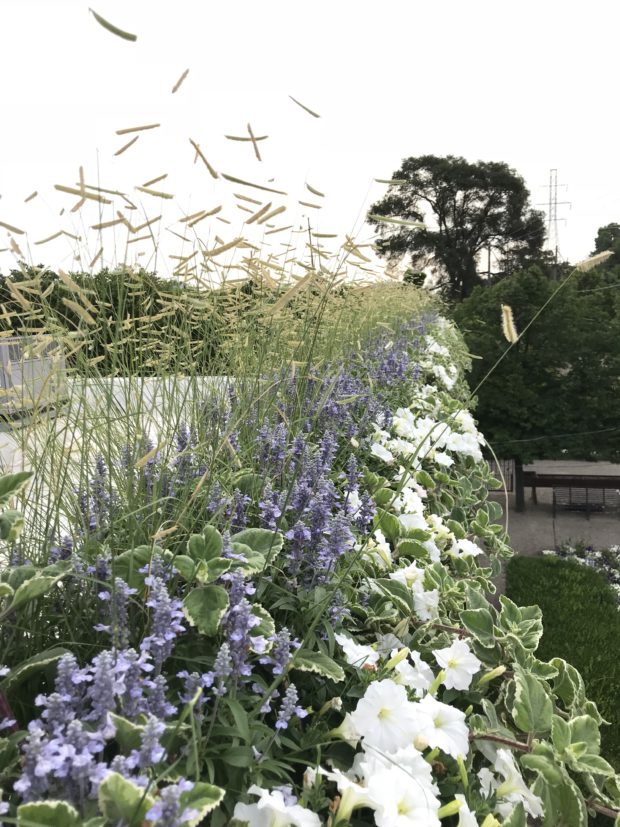 It is easy to see in this picture that white flowers have the best visibility of any color in the landscape. That white will help to draw attention to the cloud of seed heads behind them. The salvia is tough to see from the ground, but it does read as a pale heliotrope blue haze.
It is easy to see in this picture that white flowers have the best visibility of any color in the landscape. That white will help to draw attention to the cloud of seed heads behind them. The salvia is tough to see from the ground, but it does read as a pale heliotrope blue haze.
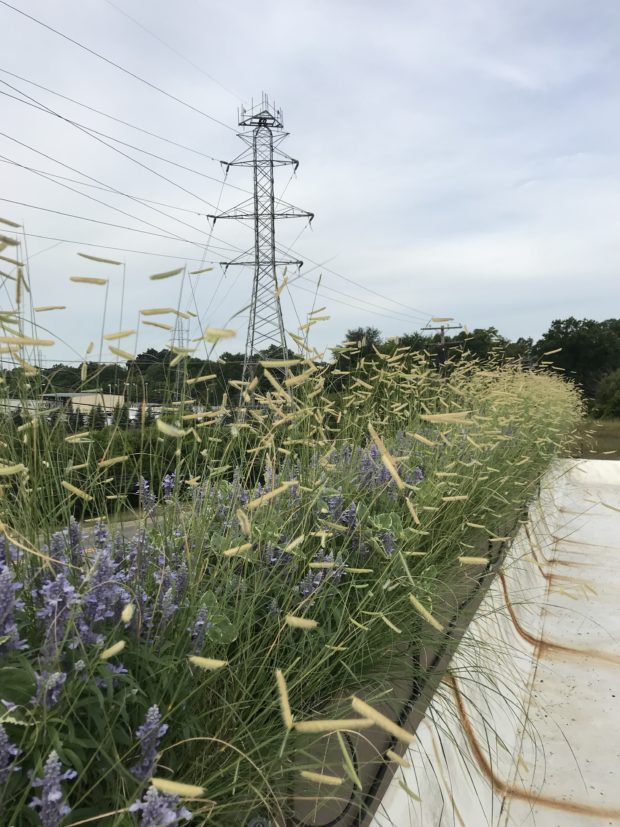 The plectranthus is beginning to wind its way into the grass. We will edit that, if it seems to be smothering its neighbors. I do not anticipate much of that, as the front of the boxes faces south. But there will come a point where we let it all go, and watch what results from nature’s free for all. The 4th quarter of a container planting can be its most interesting phase. Once a planting reaches its mature size, its overall shape will have a sculptural element, in addition to the color and texture.
The plectranthus is beginning to wind its way into the grass. We will edit that, if it seems to be smothering its neighbors. I do not anticipate much of that, as the front of the boxes faces south. But there will come a point where we let it all go, and watch what results from nature’s free for all. The 4th quarter of a container planting can be its most interesting phase. Once a planting reaches its mature size, its overall shape will have a sculptural element, in addition to the color and texture.
 This may not be the most showy of my roof box plantings, but it is most certainly my favorite ever. I like how loose and informal it is. I love the color. I have David to thank for these pictures up on the roof-I do not go up there. Climbing up to the roof of the Works on an extension ladder is not for me. How it looks in these photographs makes me think I may want to bring this scheme downstairs somewhere.
This may not be the most showy of my roof box plantings, but it is most certainly my favorite ever. I like how loose and informal it is. I love the color. I have David to thank for these pictures up on the roof-I do not go up there. Climbing up to the roof of the Works on an extension ladder is not for me. How it looks in these photographs makes me think I may want to bring this scheme downstairs somewhere.
 There is something about this that makes me glad to be a gardener. And appreciative of the opportunity to plants these boxes differently every year. I suspect Rob really likes them too. the roof boxes
There is something about this that makes me glad to be a gardener. And appreciative of the opportunity to plants these boxes differently every year. I suspect Rob really likes them too. the roof boxes
